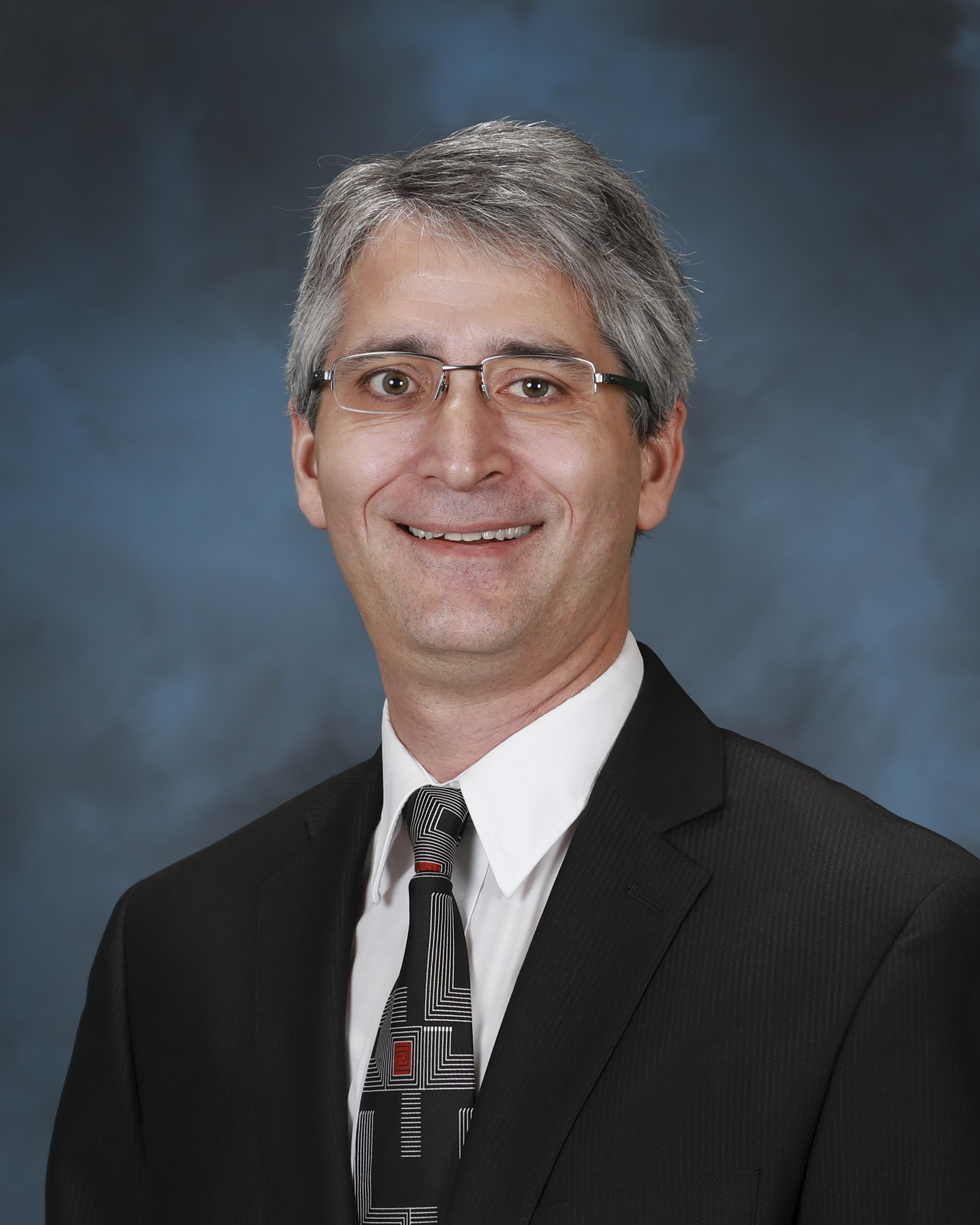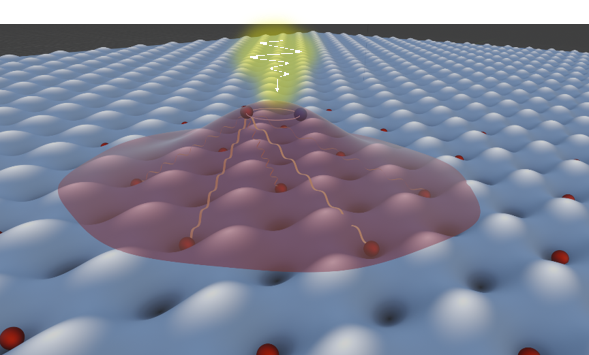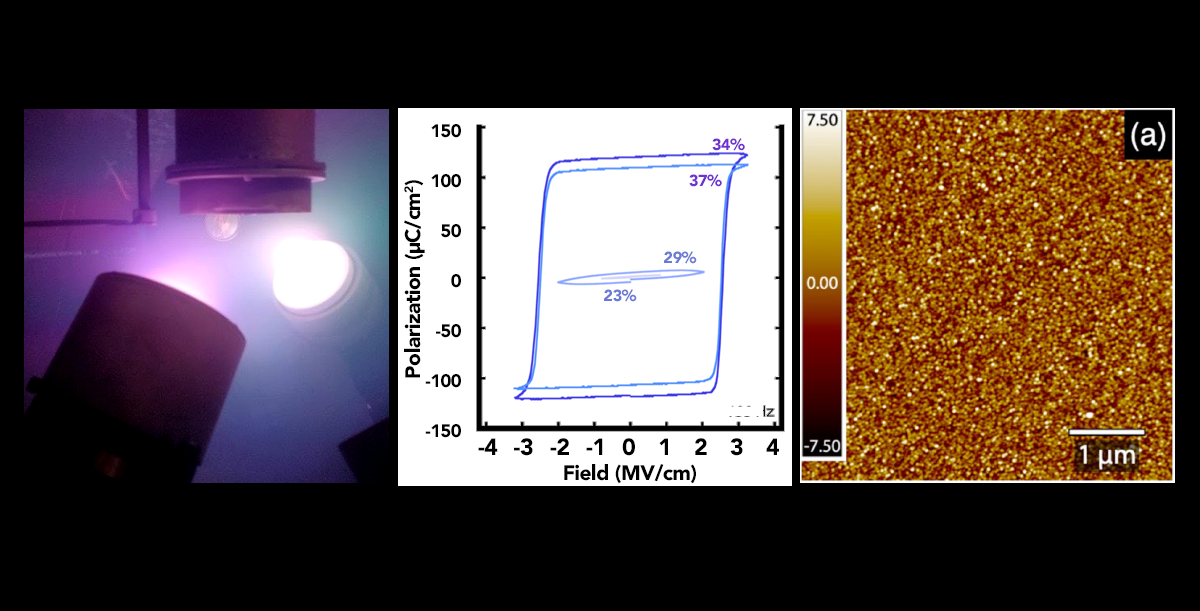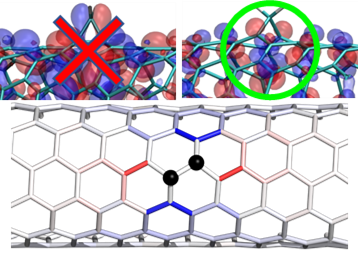Air-conditioning needs an energy overhaul—PNNL research provides a roadmap to get there using energy efficient adsorption cooling.
Tag: Materials Science
New Record For Modeling Atoms Smashes Previously Held Record Number By Factor of 10
A new record has been set by researchers at the Oden Institute for Computational Engineering and Sciences for calculating the energy distribution function, or “density of states,” for over 100,000 silicon atoms, a first in computational materials science.
Underwater glove puts octopus’ abilities on the hand of humans
Humans aren’t naturally equipped to thrive underwater. There are critical times when this becomes a liability. Rescue divers, underwater archeologists, bridge engineers, and salvage crews all use their hands to extract people and objects from water, and some of those removals suffer damage if subjected to an iron grip. Researchers at Virginia Tech working to solve this problem have developed an octopus-inspired glove capable of securely gripping objects underwater. They call it: Octa-glove.
These energy-packed batteries work well in extreme cold and heat
Researchers developed lithium-ion batteries that perform well at freezing cold and scorching hot temperatures, while packing a lot of energy. This could help electric cars travel farther on a single charge in the cold and reduce the need for cooling systems for the cars’ batteries in hot climates.
Cooking Up a Conductive Alternative to Copper with Aluminum
The first-ever simulation of aluminum conductivity offers a recipe for an inexpensive, lightweight alternative to copper.
Press registration opens for the hybrid ACS Fall 2022 meeting
The American Chemical Society’s ACS Fall 2022 will be held virtually and in Chicago Aug. 21–25 with the theme “Sustainability in a Changing World.” ACS considers requests for press credentials and complimentary meeting registration from reporters and public information officers at selected institutions.
New Ultrathin Capacitor Could Enable Energy-Efficient Microchips
Scientists at Berkeley Lab and UC Berkeley have developed a thin film from a century-old material for next-gen memory and logic devices. The breakthrough advances the pursuit of low-voltage electronics that require less energy to operate than today’s silicon-based electronics.
Exploring New Materials Through Collaboration
Materials Scientist Jim De Yoreo guides a team that develops novel materials and understands how they form through collaboration and mentorship.
Department of Energy names Argonne researchers to receive Early Career Research Program Awards
The Early Career Research Program Awards are a prestigious funding opportunity for early career researchers. Only 83 researchers have received funding of hundreds of applications, and only 27 of those are national laboratory researchers. Four scientists from Argonne have received funding.
New Way to Identify Influenza a Virus Lights Up When Specific Virus Targets Are Present
The influenza A virus, which is responsible for seasonal flu outbreaks, is also the only influenza virus that has previously caused flu pandemics.

ORNL’s Sabau recognized by leading materials society
Adrian Sabau of the Department of Energy’s Oak Ridge National Laboratory has been named an ASM International Fellow.
Artificial Intelligence Agents Argue to Enhance the Speed of Materials Discovery
Researchers have developed a new artificial intelligence (AI)-powered approach to analyzing X-ray diffraction (XRD) data. The X-ray Crystallography companion Agent (XCA) approach assembles a group of AIs that debate each other while analyzing live streaming X-ray data. Once the AIs cast their final votes, the XCA approach uses the vote tally to interpret what the most likely atomic structure is and to suggest how confident the researchers should be of the AI analysis. The AI analysis matches human effectiveness but takes just seconds.
First International Conference on Heterostructured Materials (HSM I)
HSMs represent an emerging class of materials that are expected to become a major field of scientific exploration for the materials, mechanics, physics and computer simulation communities in the coming years. As an emerging materials field, many fundamental issues need to be probed.
Designing the perfect piece of chocolate
We like some foods, and dislike others.
Senator Cantwell, Science Leaders Help Break Ground on $75 Million Grid Storage Launchpad
New facility will accelerate energy storage innovation, increase clean energy adoption and grid resilience.

Lasers trigger magnetism in atomically thin quantum materials
Researchers discovered that light can trigger a form of magnetism in a normally nonmagnetic material. This magnetism centers on the behavior of electron “spin.” By controlling & aligning electron spin at this level of detail & accuracy, this platform could have applications in quantum computing & simulation.
Key witness helps scientists detect ‘spooky’ quantum entanglement in solid materials
Quantum entanglement occurs when two particles appear to communicate without a physical connection, a phenomenon Albert Einstein famously called “spooky action at a distance.” Nearly 90 years later, a team led by the U.S. Department of Energy’s Oak Ridge National Laboratory demonstrated the viability of a “quantum entanglement witness” capable of proving the presence of entanglement between magnetic particles, or spins, in a quantum material.
Laboratory Will Illuminate Formation, Composition, Activity of Comets
In Review of Scientific Instruments, researchers have developed a laboratory to simulate comets in space-like conditions. The goal of the Comet Physics Laboratory is to understand the internal structure of comets, as well as how their constituent materials form and react. Many of the lab’s future experiments will involve creating sample comet materials with differing compositions. By testing those materials in the space-like chamber, the researchers can compare each sample to what has been observed on actual comets.
Energy Secretary, Washington Governor Dedicate Energy Sciences Center at PNNL
Fundamental research conducted at the $90-million research facility will help the nation meet its clean energy goals.
Speedier Manufacturing for Stronger Aluminum Alloys
Developed at PNNL, Shear Assisted Processing and Extrusion, or ShAPE™, uses significantly less energy and can deliver components like wire, tubes and bars 10 times faster than conventional extrusion, with no sacrifice in quality.
ORNL to partner with University of Oklahoma
The Department of Energy’s Oak Ridge National Laboratory and the University of Oklahoma, known as OU, recently executed a memorandum of understanding to officially recognize their partnership in pursuing shared research and development goals.
Climate Champion Professor Mihri Ozkan discusses recent advances in the development and application of CO2 capture materials and also addresses the main challenges that need to be overcome in order to bring these material technologies to the market.
Mihri Ozkan, professor of the Electrical and Computer Engineering Department at the University of California, Riverside, will be discussing her team’s research at the upcoming 2021 MRS Fall Meeting in Boston. See Symposium EN13-Climate Change Mitigation Technologies. The pace of…
Giulia Galli awarded Rahman Prize from American Physical Society
The American Physical Society awards the Rahman Prize to Argonne senior scientist Giulia Galli.
Laser treatment shows potential for reducing industrial chemical processing for vehicles
A multidisciplinary team from the Department of Energy’s Oak Ridge National Laboratory has applied a laser-interference structuring technique that makes significant strides toward eliminating the need for hazardous chemicals for corrosion protection in military vehicles and aircraft systems.
Avoiding an Energy Cold Crunch with More Efficient Cooling
Covalent organic polymers can adsorb three times more refrigerant than the best available alternatives, resulting in more efficient cooling.
Finding a metal-oxide needle in a periodic table haystack
I went to Caltech, and all I got was this T-shirt … and a new way to discover complex and interesting materials.
After 20 years of trying, scientists succeed in doping a 1D chain of cuprates
After 20 years of trying, scientists doped a 1D copper oxide chain and found a surprisingly strong attraction between electrons that may factor into the material’s superconducting powers.
Riveting Technology Enables Lightweight Magnesium Fasteners for Fuel Efficiency
Rotational Hammer Riveting, developed by PNNL, joins dissimilar materials quickly without preheating rivets. The friction-based riveting enables use of lightweight magnesium rivets and also works on aluminum and speeds manufacturing.
When walked on, these wooden floors harvest enough energy to turn on a lightbulb
Researchers from Switzerland are tapping into an unexpected energy source right under our feet: wooden floorings.

Ferroelectrics everywhere?
A new family of ferroelectric materials that could potentially improve information and energy storage came about due to searching for ferroelectricity in places researchers never looked before.
Cao receives Young Investigator Award from American Chemical Society
Pengfei Cao, a polymer chemist at the Department of Energy’s Oak Ridge National Laboratory, has been chosen to receive a 2021 Young Investigator Award from the Polymeric Materials: Science and Engineering Division of the American Chemical Society.
Toward Scaling Up Nanocages to Trap Noble Gases
Commercially available materials may be a potentially scalable platform for trapping gases for nuclear energy and other applications.
One scientist’s trash is another’s treasure:
While making materials samples to pursue their own research goals, scientists at the U.S. Department of Energy’s Ames Laboratory discovered that an unwanted byproduct of their experiments was an extremely high-quality and difficult-to-obtain substance sought after by scientists researching layered materials.
Phosphorescent material inspired by ‘glow in the dark’ wood
Scientists have harnessed the natural ability of wood to faintly glow to develop a new sustainable phosphorescent material that could potentially be used in a wide number of applications, from medical imaging and optical sensing to ‘glow in the dark’ dyes and paints.
One material with two functions could lead to faster memory
In a step toward a future of higher performance memory devices, researchers from National Taiwan Normal University and Kyushu University have developed a new device that needs only a single semiconductor known as perovskite to simultaneously store and visually transmit data.
Quantum Materials Cloak Thermal Radiation
Scientists demonstrated that ultrathin films of samarium nickel oxide can mask the thermal radiation emitted by hot materials. This is due to the material undergoing a gradual transition from insulator to conductor. This study shows that quantum materials such as samarium nickel oxide can manage thermal radiation with potential applications in infrared camouflage, privacy shielding, and heat transfer control.

Lighting the Way for Nanotube Innovation
Scientists have learned how to place crystalline defects in new materials with atomic-scale precision. This enables materials that can control excitons—energy carriers similar to subatomic particles. New research reveals how to create local energy wells that “capture” the excitons. This small but important step could lead to smaller, more efficient components for optical telecommunications.

Quantum Computing Enables Unprecedented Materials Science Simulations
Researchers have for the first time used a quantum computer to generate accurate results from materials science simulations that can be verified with practical techniques. Eventually, such simulations on quantum computers could be more accurate and complex than simulations on classical digital computers.
Shih-Ting (Christine) Wang: Designing Materials for Biomedicine
Using DNA-based assembly, the Center for Functional Nanomaterials postdoc has assembled functional proteins into ordered lattices and coated nanostructures for drug delivery.
“Greening” Biomaterials and Scaffolds Used in Regenerative Medicine
In the biomaterials industry, electrospinning is a ubiquitous fabrication method used to produce nano- to microscale fibrous meshes that closely resemble native tissue architecture. Alas, the process has traditionally used solvents that not only are environmentally hazardous but also a significant barrier to industrial scale-up, clinical translation, and widespread use. But now, Columbia Engineering researchers report that they have developed a “green electrospinning” process that addresses those challenges, from managing environmental risks of volatile solvent storage and disposal at large volumes to meeting health and safety standards during both fabrication and implementation.

AIME-TMS Anniversary Keynote Speakers Announced
Ten materials scientists and engineers named as AIME-TMS Anniversary Keynote Speakers. Talks made freely available online.
Automatically Steering Experiments Toward Scientific Discovery
Scientists at Brookhaven and Lawrence Berkeley National Laboratories have been developing an automated experimental setup of data collection, analysis, and decision making.
FSU researchers discover pine sap-based plastic, a potential change for future of sustainable materials
Over the past 100 years, plastics and polymers have changed the way the world operates, from airplanes and automobiles to computers and cell phones — nearly all of which are composed of fossil fuel-based compounds. A Florida State University research team’s discovery of a new plastic derived from pine sap has the potential to be a gamechanger for new sustainable materials.
Michael S. Arnold: Then and Now / 2011 Early Career Award Winner
Supported by his Early Career Research Program Award, University of Wisconsin – Madison professor Michael S. Arnold found new ways to make graphene nanostructures with smooth edges. This technology will enable next-generation energy and electronics applications.
DOE Announces $73 Million for Research to Advance Quantum Science and Technology
The U.S. Department of Energy (DOE) announced $73 million in funding to advance quantum information science (QIS) research to help scientists better understand the physical world and harness nature to benefit people and society.
New Desiccant Material Performance Crushes Industry-Standard Material by up to 350%.
In what some industry insiders are calling “the most exciting news in the HVAC world in decades,” Molecule USA, Inc. announced today that their new desiccant material, Regeneration Optimized Sorbent, (a.k.a. ROS) outperformed silica rotors by up to 350% in benchmark testing.

Capturing Electrons in Space
Interstellar clouds are the birthplaces of new stars, but they also play an important role in the origins of life in the Universe through regions of dust and gas in which chemical compounds form.
Main Attraction: Scientists Create World’s Thinnest Magnet
Scientists at Berkeley Lab and UC Berkeley have created an ultrathin magnet that operates at room temperature. The ultrathin magnet could lead to new applications in computing and electronics – such as spintronic memory devices – and new tools for the study of quantum physics.
Emergent magnetic monopoles isolated using quantum-annealing computer
Using a D-Wave quantum-annealing computer as a testbed, scientists at Los Alamos National Laboratory have shown that it is possible to isolate so-called emergent magnetic monopoles, a class of quasiparticles, creating a new approach to developing “materials by design.”
Scientists take first snapshots of ultrafast switching in a quantum electronic device
Scientist demonstrated a new way of observing atoms as they move in a tiny quantum electronic switch as it operates. Along the way, they discovered a new material state that could pave the way for faster, more energy-efficient computing.